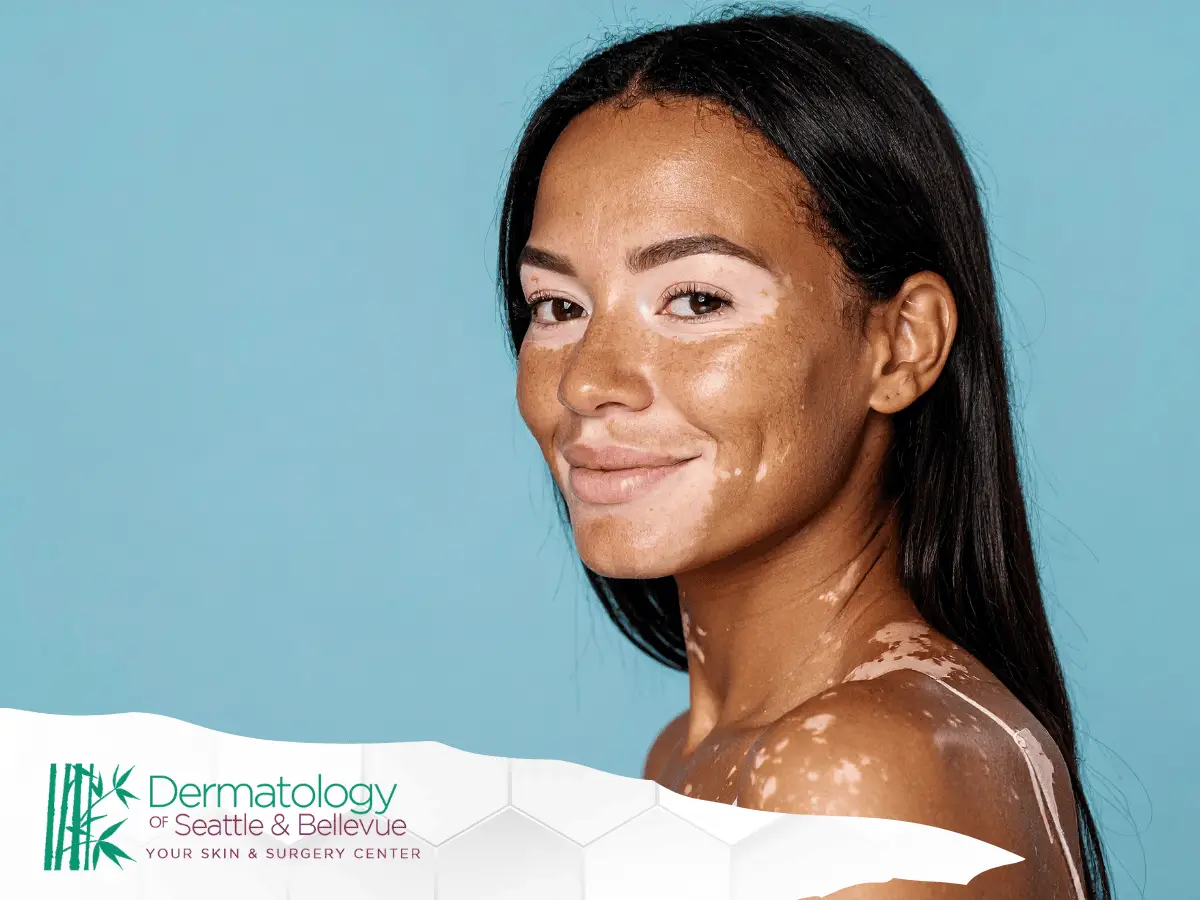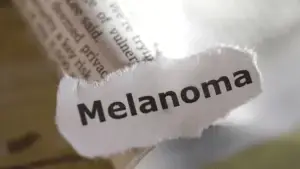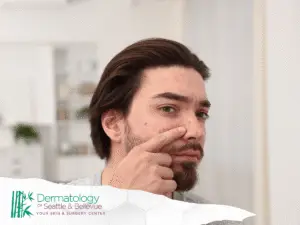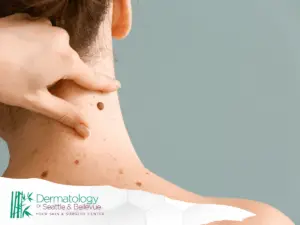Vitiligo is a chronic autoimmune disease that leads to depigmentation of the skin, often appearing as white patches on the face, hands, or other parts of the body. With more patients seeking effective and minimally invasive treatment, there’s been growing interest in the potential of ruxolitinib cream, a topical jak inhibitor therapy originally developed for other inflammatory conditions.
Quick Summary
- Vitiligo causes white patches from melanocyte loss; segmental is localized, nonsegmental is symmetrical and may spread.
- Standard options include topical steroids, tacrolimus, narrowband UVB, systemic meds, and surgery for stable cases.
- Ruxolitinib (Opzelura) is an FDA-approved topical JAK1/2 inhibitor for nonsegmental vitiligo in ages 12+.
- TRuE-V trials: >30% reached F-VASI75 at 24 weeks; gains improved by 52 weeks, best on face vs hands/feet.
- Apply thin layer twice daily to ≤10% body area; common side effects are mild irritation/itching, with rare serious risks.
This article explores the latest vitiligo treatment options: how effective is ruxolitinib cream? We’ll look at clinical evidence, side effects, application guidelines, and how it compares with traditional therapies.
Understanding Vitiligo
Vitiligo is caused by the destruction or malfunction of melanocytes, the skin cells responsible for pigment production. While its exact cause remains unclear, it is commonly linked to autoimmune responses, genetic factors, and oxidative stress.
There are two main types of vitiligo:
- Segmental vitiligo: usually localized to one side or area of the body, often appearing early in life
- Nonsegmental vitiligo: the more common form, with symmetrical white patches that may spread over time
This disease affects people of all skin tones, and while it isn’t painful or contagious, it can deeply affect quality of life and self-esteem.
Current Treatment Options for Vitiligo
Traditional treatment of vitiligo focuses on slowing depigmentation, stimulating repigmentation, and improving vitiligo noticeability. Options vary in effectiveness, cost, and accessibility.
Current therapies include:
- Topical corticosteroids – often first-line for early or mild vitiligo, though long-term use can thin the skin
- Topical calcineurin inhibitors – such as tacrolimus, especially helpful for facial vitiligo
- Phototherapy – narrowband UVB light is a common non-invasive choice for more widespread lesions
- Systemic treatment – used in select cases with rapidly spreading disease
- Surgical options like skin grafting – reserved for stable vitiligo with limited response to topical therapies
- Topical prescription therapies like ruxolitinib cream – a newer option being explored in both clinical trials and dermatology practice
Choosing the right treatment depends on vitiligo type, extent of skin depigmentation, patient age, and personal preferences.
Introduction to Ruxolitinib Cream
Ruxolitinib cream, sold under the brand name Opzelura, is a relatively new topical formulation used in the management of vitiligo. It is the first treatment of its kind approved by the FDA specifically for nonsegmental vitiligo in adults with vitiligo and patients 12 and older.
This cream contains ruxolitinib, a selective janus kinase (JAK) inhibitor that works by targeting specific enzymes involved in the inflammatory process. Unlike traditional vitiligo treatments, ruxolitinib cream is designed to reduce immune-driven destruction of melanocytes, helping to restore pigment over time.
Research Studies on Ruxolitinib Cream
Clinical trials and ongoing research have provided promising evidence regarding the efficacy and safety of topical ruxolitinib. The most widely referenced studies include two large Phase III trials known as TRuE-V1 and TRuE-V2, both evaluating the use of ruxolitinib cream in nonsegmental vitiligo.
In these studies, patients applied the cream twice daily for up to 24 weeks, and results showed statistically significant improvements in repigmentation, especially on the face. These trials also assessed changes using the Vitiligo Area Scoring Index (VASI), with many participants showing reduced vitiligo area and improved vitiligo noticeability scale scores.
Mechanism of Action
The therapeutic effect of ruxolitinib is based on its ability to inhibit JAK1 and JAK2, key proteins in the janus kinase signaling pathway. This pathway plays a crucial role in autoimmune and inflammatory responses, including those involved in melanocyte destruction.
By blocking JAK inhibition, ruxolitinib cream interrupts the immune system’s attack on melanocytes, allowing them to survive and function. This promotes repigmentation in treated lesions—particularly in areas like the face, where the response appears to be most noticeable.
Efficacy of Ruxolitinib Cream in Clinical Trials
The efficacy of ruxolitinib cream has been most clearly demonstrated in the TRuE-V clinical trial program, which focused on patients with vitiligo using the Vitiligo Area Scoring Index (VASI) to measure outcomes. Results revealed that many patients experienced significant repigmentation within just a few months of consistent use.
Key findings from trials of ruxolitinib cream:
- Over 30% of patients achieved ≥75% improvement in facial VASI (F-VASI75) after 24 weeks
- Continued use showed even greater improvements at the 52-week mark
- Best results were seen in facial vitiligo, with more limited response in hands and feet
- Adverse events were generally mild, including pruritus and exfoliation
- Improvements in vitiligo noticeability were reported by both patients and clinicians
While it’s not a cure, these results mark an important step forward in vitiligo treatment.
Dosage and Application of Ruxolitinib Cream
The recommended application of ruxolitinib cream is a thin layer applied twice daily to affected skin. The cream should only be used on up to 10% of total body surface area due to the risk of systemic absorption, especially with long-term use.
Patients are advised to avoid applying the cream to broken or infected skin and to wash hands thoroughly after application. Consistent use over months is usually needed to achieve visible repigmentation, and skipping doses may reduce efficacy.
Potential Side Effects of Ruxolitinib Cream
As with any prescription product, ruxolitinib cream comes with potential adverse events, though most reported in clinical trials were mild to moderate in severity. The most common include itching, redness, and slight irritation at the site of application.
In rare cases, because ruxolitinib is a jak inhibitor, there’s a theoretical risk of more serious complications such as serious infections, blood clots, and changes in blood markers—though these were not common in topical use trials.
Comparing Ruxolitinib Cream with Other Treatment Options
When comparing ruxolitinib cream to traditional vitiligo treatment options, several important distinctions emerge. Unlike topical corticosteroids, which can cause skin thinning over time, or phototherapy, which requires frequent in-office sessions, ruxolitinib offers a targeted approach that can be applied at home with fewer systemic risks.
Compared to:
- Topical calcineurin inhibitors: Ruxolitinib generally has higher efficacy, especially in facial vitiligo
- Phototherapy: While still highly effective, phototherapy requires clinic access and often months of commitment
- Systemic treatments: These are often reserved for widespread or aggressive cases and come with broader side effects
As a topical prescription therapy, ruxolitinib cream fills an important gap in the treatment of vitiligo, especially for patients seeking localized, non-invasive management with proven results.





